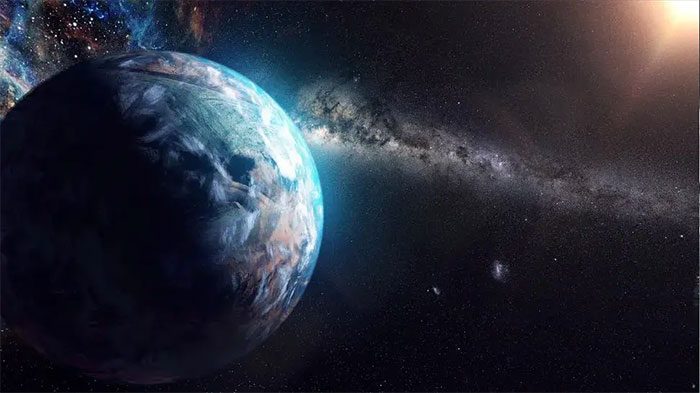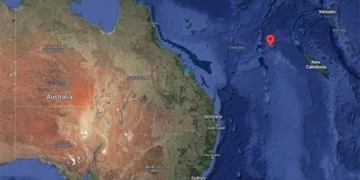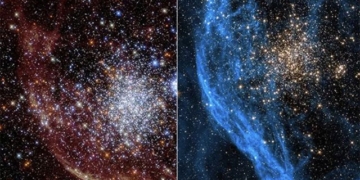Some Earth-like rocky planets “captured” by the Sun billions of years ago may still be lurking right around us.
A recent study published in the scientific journal Astrophysical Journal Letters suggests that the Solar System may harbor as many as 9 rocky planets, not just the 4 previously known.
Earth is a quintessential rocky planet. The other three familiar rocky planets are Mercury, Venus, and Mars, which mainly consist of rock rather than being enveloped in thick gas like the gas giants such as Jupiter and Saturn.

Graphic depicting Earth-like worlds floating at the edge of the Solar System – (Image: LIVE SCIENCE).
The research team, led by astrophysicist Amir Siraj, Director of the Interstellar Object Research Program at Princeton University (USA), believes that 5 additional rocky planets are hiding at the edge of the Solar System.
According to Live Science, unlike Earth and its known “friends”, these worlds did not originate from the Solar System’s protoplanetary disk; instead, they are classified as free-floating planets (FFP).
Many FFPs have been proven to exist in interstellar space, their origins remain mysterious. One hypothesis suggests they formed directly from gas and dust like stars, while another argues that they were ejected from star systems following catastrophic collisions.
Approximately 2-5 FFPs may have been “captured” by the Solar System in its early days, according to research from Princeton University, which conducted 100 million different simulations.
These planets are similar to Earth but somewhat smaller, with sizes ranging from that of Mercury to Mars.
They are trapped in the Oort Cloud, a vast structure at the edge of the Solar System, which is home to countless asteroids and icy comets.
Although the Oort Cloud is still associated with the Solar System, it lies beyond the heliosphere, or “out of reach” of the plasma winds from the Sun, making these hypothetical planets appear to be merely “tethered” to the outer fringe of the Solar System.
They could be as far as 1,400 astronomical units (AU) away from us, with one AU being the distance from the Sun to Earth.
This is not the first time the hypothesis of “captured planets” has been proposed and validated, but it is the first time it has been applied to the Solar System.
Moreover, these planets are believed to be independent of “Planet X”, a hypothetical world located in the region of space beyond Neptune’s orbit, which is thought to be much larger than Earth and may take 10,000-20,000 years to complete one orbit.
This mysterious world named X is indicated through indirect evidence of how it interacts with its surroundings, but the existence of Planet X remains controversial, with no direct evidence yet available.


















































